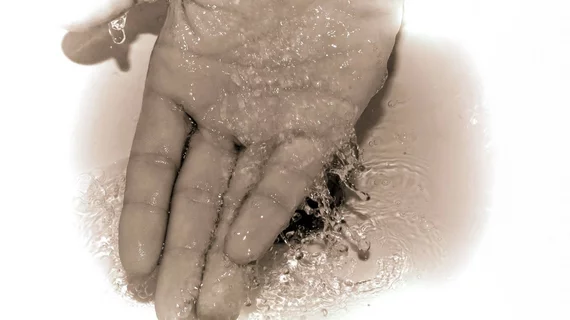Compared with standard statistical reviews of process-control charts, AI analysis of data routinely captured by hospitals monitoring handwashing compliance can provide highly targeted and actionable feedback to individual healthcare workers.
That’s according to a study conducted at Saint Louis University and published July 17 in the American Journal of Infection Control.
In introducing their work, the authors note infections acquired in healthcare settings harm many patients and cost the U.S. close to $10 billion a year, making hand hygiene “the most important intervention to reduce the risk of transmission of pathogens.”
Lead author Timothy Wiemken, PhD, MPH, and colleagues tested a novel algorithm specifically aimed at catching time series anomalies, which can pinpoint data points that deviate from a standard set.
To test the algorithm, the team assigned trained observers to gather hand-hygiene data over a period of 34 months in a 356-bed academic medical center.
The researchers used statistical control pass/fail charts as a comparison tool.
They built their algorithm on an established technique of seasonal and trend decomposition using Loess (STL) for time series anomaly detection.
They found an average of 1,561 observations were made each month, and the average rate of compliant handwashing sessions was 58% (n = 901).
The algorithm identified 18% of the rates as anomalous.
Time series anomaly detection “delivers a more specific identification of potentially abnormal compliance rates, providing a more focused visualization for accurate feedback to those observed,” the authors concluded.
In their discussion, Wiemken et al. emphasize that interventions may be needed even when a particular analytical approach does not detect anomalous compliance rates.
“Even in times when all the rates are normal, it is possible that the rates are too low overall (with hand hygiene compliance) or too high (for infection rates),” they write. “Therefore, care must always be taken to evaluate the data statistically as well as through a clinical lens.”
The report offers a link to an open-access web application based on the newly verified method of hand-hygiene surveillance.

